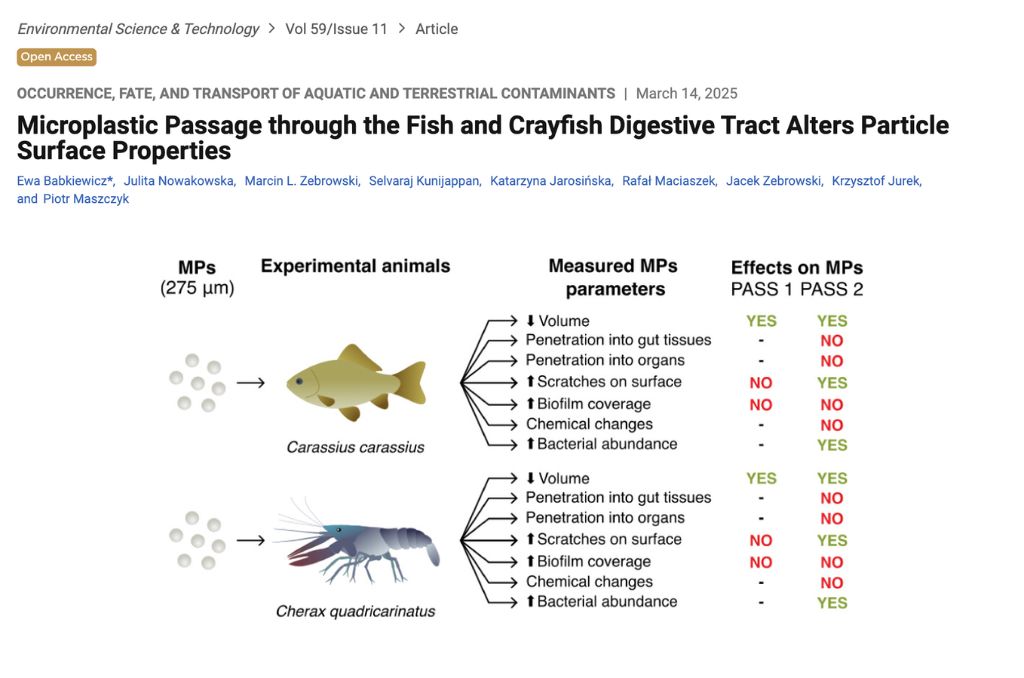New Research on Microplastic Degradation

A team of researchers from the Department of Hydrobiology and the Imaging Laboratory at the Faculty of Biology (University of Warsaw), together with researchers from other scientific units, showed that:
“foraging by fish and large aquatic invertebrates such as crayfish leads to mechanical fragmentation of microplastics, reducing their average size and accelerating their degradation.”
The discovery is described in the article “Microplastic passage through the fish and crayfish digestive tract alters particle surface properties,” published in Environmental Science and Technology [FREE ACCESS]. The team includes Ewa Babkiewicz, Julita Nowakowska, Marcin Żebrowski, Katarzyna Jarosińska and Piotr Maszczyk.
– The researchers conducted an experiment analyzing the effect of microplastics passage through the digestive tract of cyprinid fish (Carassius carassius) and crayfish (Cherax quadricarinatus) on particle surface area, particle size and ability to be colonized by bacteria. The animals were fed a diet with or without microplastics. After passing through the digestive tract twice, the particles were exposed to known bacterial densities. Surface damage, changes in particle size and biofilm on the surface were analyzed by scanning electron microscopy, and the chemical composition of the surface was assessed by Fourier transform infrared spectroscopy. In addition, the penetration of nanoplastics into the tissues of the gastrointestinal tract was studied by pyrolysis technique coupled with gas chromatography and mass spectrometry.
– The results indicate that passage through the gastrointestinal tract alters the surface properties of microplastics and leads to their fragmentation, but does not affect the chemical composition or penetration of nanoplastics into animal tissues. The data obtained suggest that fish and crayfish foraging plays an important role in the degradation of microplastics in the aquatic environment, promoting their breakdown and facilitating further biodegradation by microorganisms.
– These results underscore the need to consider the role of aquatic organisms in modeling the cycling of plastics in ecosystems, which can help better predict the fate of microplastics and develop more effective strategies for reducing plastic pollution.
